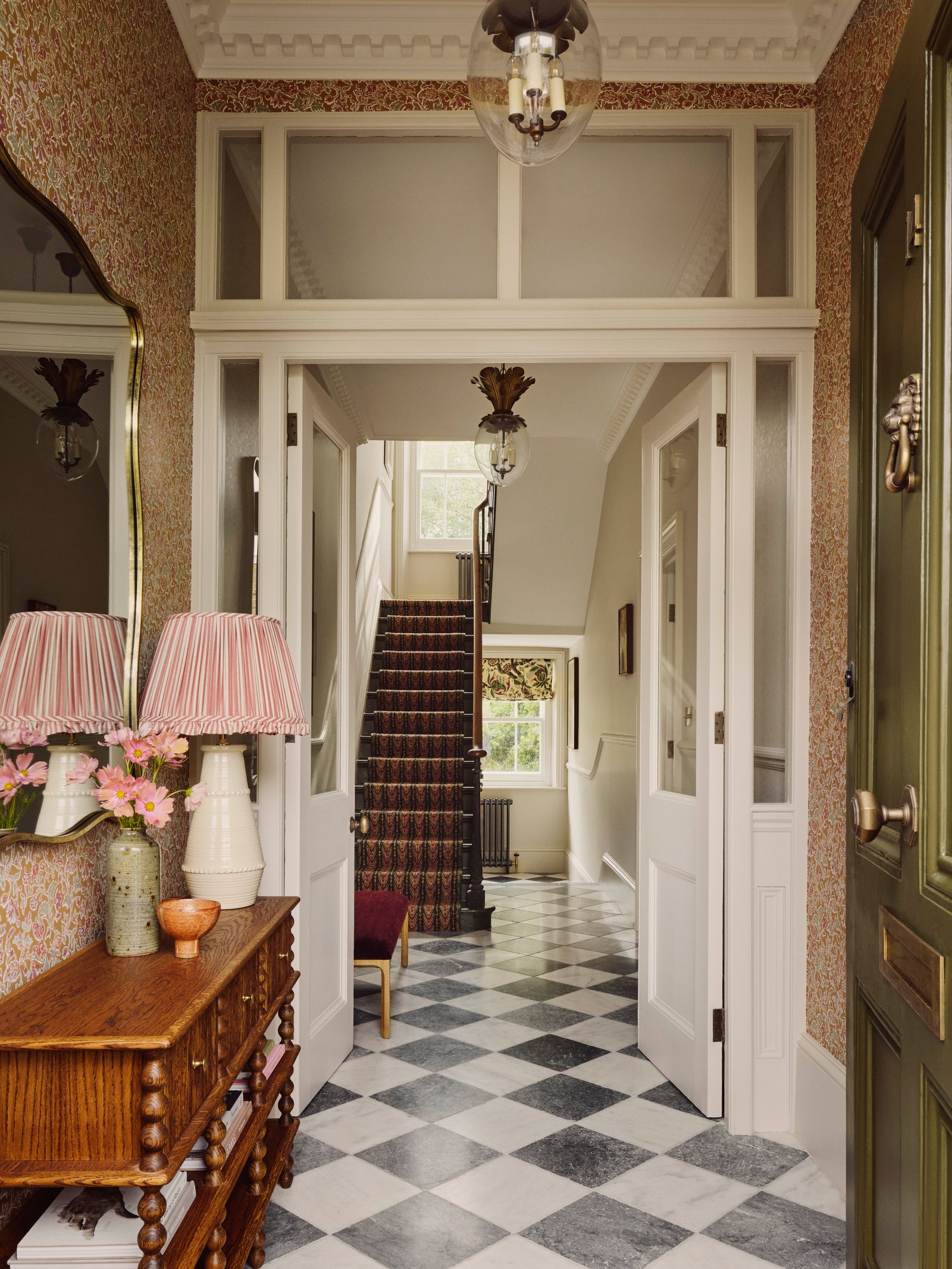“The wife was up for embracing a certain amount of color and pattern, which is what I love so much,” enthuses Ainscough. And given the scale and ceiling heights of the Victorian house, it was “easier to incorporate that without it feeling overbearing.” In turn, the project’s primary challenges proved to be spatial rather than style-related, as the designer worked to bridge former and future in the original house and its newly added extension. The lower ground floor—“dark and dingy” at first—was transformed via a reconfiguring of the walls. Reimagining the kitchen, with DeVol Kitchens, provided a special challenge, since the space “historically wouldn’t ever have been a kitchen,” notes Ainscough, who opened up the dining and kitchen areas to make it more family-friendly (and better lit, thanks to the double-aspect floor plan). Ceiling moldings, which upon first glance during the selection process appeared oversized, actually worked—thanks to the house’s proportions—to “soften and make it feel less like a kitchen.”
The designer also tucked in some subtle references to the local neighborhood, a conservation area of London: When the family originally purchased the home, an “old William Morris wallpaper went the whole way up the stairway, which was quite full-on,” she shares. “It was so English.” While that wall covering wasn’t to be preserved, a refined “nod to that Arts and Crafts style” was achieved with Soane’s Wild Tulip wall covering papering the main hallway. In accommodating a young family, Ainscough’s brief meant carving out special—and sometimes small—spaces. Take the children’s rooms: The son’s room, which pops with a monochromatic blue theme, was so slight that the designer “didn’t even know how we were going to get a single bed in it.” The pair of bedrooms benefited from a bathroom “shoehorned” between them.

